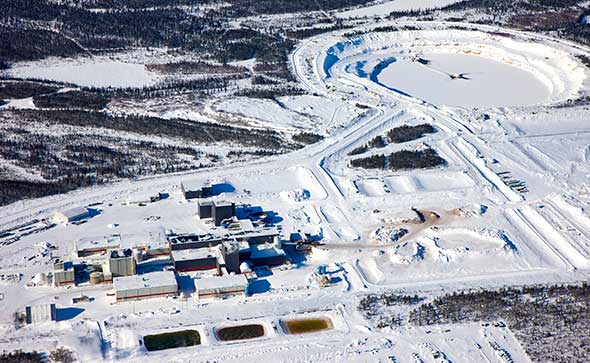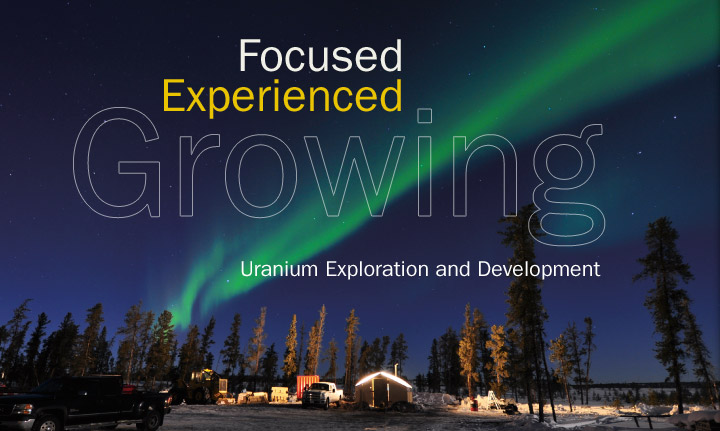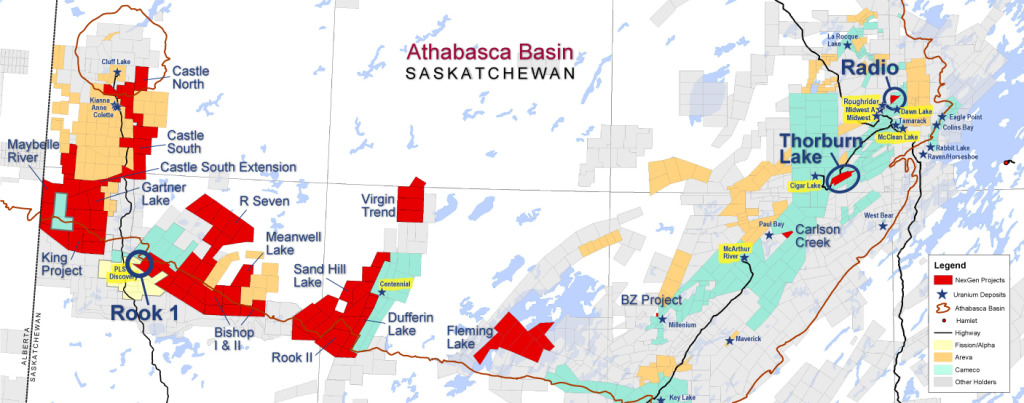With most of the recent excitement in the uranium exploration space being focused on the new discoveries in the southwest part of the Athabasca Basin, including Arrow (NexGen Energy) and PLS (Fission), Lukas Lundin's Denison Mines (DML:TSX) has made a new high-grade uranium discovery known as the Gryphon Zone at their Wheeler River project on the historic eastside.
This morning, the company announced the final results from a 14,937 metre, 20 drill program at their new discovery.
Highlights from the remaining half of the drilling program include:
- Hole WR-573D1, which intersected 15.8% eU3O8 over 2.3 metres.
- Hole WR-574, which intersected 7.0% eU3O8 over 2.0 metres, followed by 9.8% eU3O8 over 2.5 metres.
The Wheeler River property lies between the McArthur River Mine and Key Lake mill complex. Denison is the operator and holds a 60% interest in the project. Cameco holds a 30% interest and JCU Canada holds the remaining 10% interest. It is already home to the Phoenix deposit which is the highest grade uranium deposit in the Basin.
Phoenix has 166,400 tonnes at 19.13% U308 containing over 70 million pounds of uranium in the Indicated category.
When you stop and think about how rich some of this rock is, it is shocking. High-grade gold mines have to move millions of tonnes of material to get each ounce of gold, whereas a deposit like this can contain only slightly over 150,000 tonnes of material, yet still hold 70 million pounds of uranium (valued at $2.1 billion at $30/lb uranium).
Remember, 1% U308 is equivalent to over 20 g/t gold or 16% copper (based on $1,335/oz gold and $2.95/lb copper).
Ron Hochstein, President and CEO of Denison stated: "We are very encouraged by the Gryphon zone results to date. In a relatively short time we have been able to gain an understanding of the geology surrounding a newly discovered zone of high grade uranium mineralization on our flagship Wheeler River project. "

Denison owns 22.5% of the McClean Lake mill in northern Saskatchewan (Photo: Canadian Nuclear Safety Commission)
The company has identified the Gryphon zone as measuring 350 metres long (along the plunge) by 60 metres wide (across the plunge) and consists of multiple stacked lenses of uranium with variable thicknesses that plunge to the northeast and remain open in both plunge directions. Hole WR-573D1 was drilled down-plunge. The drill holes are angled steeply to the northwest and the mineralization is interpreted to dip moderately to the southeast. As a result, the company estimates that the true thickness is approximately 75% of the intersection length.
In mid-August the company completed a $15 million flow-through financing led by Dundee (which has led most of the uranium financings this year) at $1.62 per FT share. Mr. Hochstein expects to use a bulk of this funding to expand their exploration efforts at Gryphon in the upcoming 2015 program.
"We plan to continue to focus our efforts on the Gryphon zone and our other higher priority projects," Mr. Hochstein continued.
Denison also drilled a total of 2,995 metres in 5 holes at their Crawford Lake property and another 1,194 metres in 2 holes at Bachman Lake. Although no significant uranium mineralization was intersected at Crawford Lake, the company is optimistic because they were able to extend a large zone of Athabasca sandstone and basement alteration on two conductors (CR-2 and CR-5) which are on trend to the south of Millennium.
Athabasca sandstone frequently occurs with the biggest and richest unconformity-linked uranium deposits discovered to date. Geologists are almost always intrigued when they find this sandstone with strong alteration in the Basin.
Read: Denison Extends Gryphon Zone at Wheeler River Project and Completes Summer Drilling Programs























